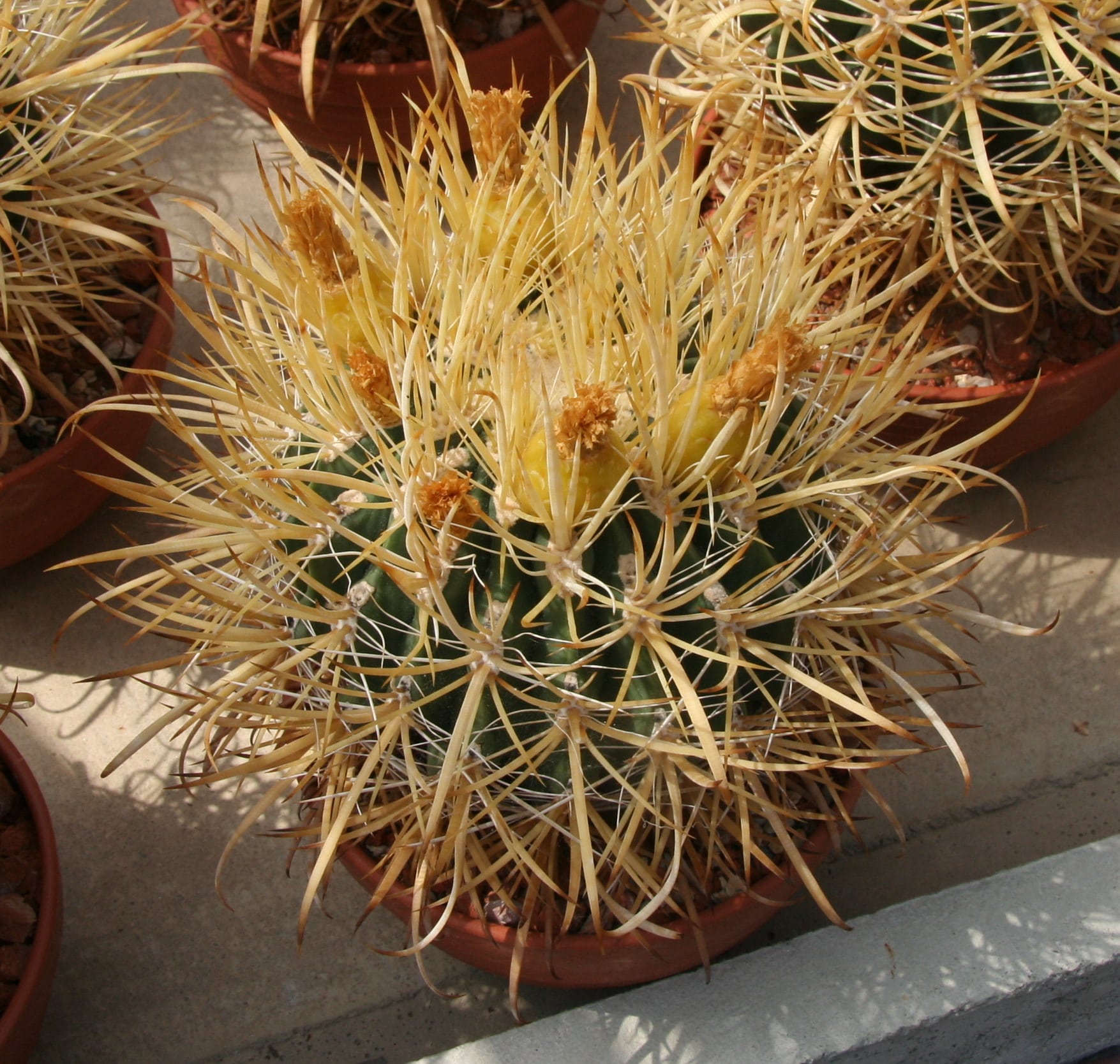Ferocactus Chrysacanthus Info: How To Grow Ferocactus Chrysacanthus Cacti

Folks that live in desert regions can easily propagate and grow spectacular cacti, one of which is the Ferocactus chrysacanthus cactus. This cactus grows naturally on the island of Cedros off the west coast of Baja, California. Of course, even if you don’t live in the desert, cactus can be grown indoors as well in most any climate. Interested in learning how to grow Ferocactus chrysacanthus? The following article on Ferocactus chrysacanthus info discusses growing and care of this cactus.
What is Ferocactus chrysacanthus Cactus?
F. chrysacanthus is a type of barrel cactus. It is a slow growing species that may eventually grow up to about a foot (31 cm.) across and up to 3 feet (91 cm.) tall. The descriptive term “barrel” is in reference to the shape of the plant, which is barrel shaped. It has a single rounded to cylindrical form. It has a dark green stem that isn’t possible to see in mature plants. The cactus has between 13 to 22 ribs, all of which are armed with curved yellow spines that become grey in color as the plant matures. Its nomenclature, ‘Ferocactus,’ is derived from the Latin word ferox, meaning fierce, and the Greek word kaktos, meaning thistle. Chrysacanthus generally means golden flower, and this cactus does bloom, but in this case, it may be referring to the golden yellow spines. As to the flower, it is rather insignificant. The cactus blooms in summer with blossoms that are brownish yellow to orange and about an inch (2.5 cm.) long by 2 inches (5 cm.) across.
How to Grow Ferocactus chrysacanthus
In its native habitat, F. chrysacanthus runs the gamut between desert, hills, valleys, and coastal regions. Although it seems like it could grow almost anywhere, it gravitates towards areas of poor soil that never get waterlogged. Of course, the other constants are plenty of sunshine and warm temperatures. So, that said, in order to grow this cactus, mimic Mother Nature and provide it with plenty of light, warmth, and well-draining porous soil. For the best Ferocactus chrysacanthus care, keep in mind that while this cactus will take full sun, when the plant is young and its epidermis is still maturing, it would be best to keep it in a partial sun exposure so it doesn’t scald. Plant F. chrysacanthus in porous cactus soil or gravel; the point is to allow for the best possible drainage. On that note, if you are growing this cactus in a container, be sure it has drainage holes. Water the cactus sparingly. Give it a good watering and let the soil become dry to the touch (stick your finger down into the soil) before watering again. If this cactus is going to be grown outdoors, be sure to keep an eye on temperatures when winter is near. The minimum average temperature that F. chrysacanthus tolerates is 50 degrees F. (10 C.), but it will tolerate a day or so of light frost if the soil is dry.
Sign up for the Gardening Know How newsletter today and receive a free copy of our e-book "How to Grow Delicious Tomatoes".

Amy Grant has been gardening for 30 years and writing for 15. A professional chef and caterer, Amy's area of expertise is culinary gardening.
